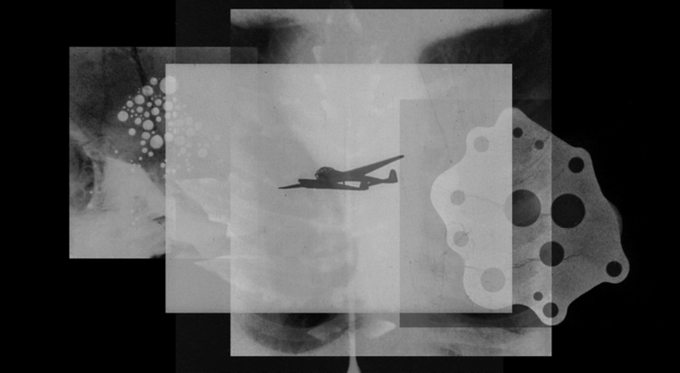Alexandra Navratil (1978) and I communicated by email. I know that she lives in Zurich and that she teaches at the Art Institute in Basel. I discovered her work in an image taken from one of her films, Resurrections (2014) and I asked her to send me more films. For me, her work has a kind of aquatic quality: archive images are like a liquid element that she dives into. Clara Schulmann
1. In her autobiography, Kim Gordon reproduces a text that she wrote in the 1980s about a Sonic Youth tour and her place in the band. “I like being in a weak position and making it strong,” she said. How would you describe your position as an author and as a filmmaker or as an artist making films?
AN Maybe I would like to describe my position as working from a point of uncertainty and doubt and transforming this feeling into a potentiality instead of seeing it as a lack or weakness.
2. In general, writing is a solitary experience and making films is a collective experience. Is this difference important to you?
AN When I started making videos, I used to make works where I needed a technical crew, a cameraman, actors, etc. I was very much into cinema and would go to the Cinemateca in Barcelona about twice a week and I would study particular cinematic shots and devices employed by film directors.
With time, I discovered that I did actually not enjoy working in this manner. When you work with a team and set up a shoot, there is all this preparation time and then the actual filming is reduced to one or two days. Also giving orders to people, making them do things over and over again and pushing it to the limit made me feel anxious.
I slowly changed my working process and now making my films is mostly a solitary and processual experience. I work with a lot of archival material, so it is more about getting to know the images I work with intimately, about understanding what they require from me. This is probably the part in the whole process that gives me most pleasure. In everyday life our relationship with images is an extremely fast and consumerist one and it is rewarding to look at images for a long time and to think about them very carefully. Writing follows a similar logic for me, it is about becoming intimate with words.
I often collaborate with a graphic designer: Sam de Groot, a composer: Natalia Dominguez Rangel and a 3D designer: Miguel Angel Garcia for the films. All three are amazing to work with, there is a strong mutual understanding and they bring an external element to my work, which escapes my control to a certain extent.
3. In an interview, the poet Lisa Robertson writes: “…as a very young reader, in the 80s, I constantly felt affronted that I could not find a point of recognition in the extreme masculinist philosophy and literature I was reading. To discover feminist thinking and writing was a recognition that gave me the will to write. That was a very relevant kind of pleasure.” Do you share her position? How did you discover feminist thinking and what difference did it make to you?
AN I had some rather good language teachers at school, who made us read Simone de Beauvoir, Marguerite Duras, Virginia Woolf, Marguerite Yourcenar. So maybe I did not have this specific moment of realization like the one Lisa Robertson describes, although of course I understood and felt early on the lack of recognition for women writers and thinkers. Now I feel that I am surrounded by the most amazing female artists, writers and thinkers who constantly inspire me.
4. This question concerns the link between your artistic activity and gymnastics. What kind of exercises do you need to do in order to write or to make a film?
AN Actually I need the opposite of exercise. I like to think about my work just after I wake up or just before falling asleep. Then my mind slips into a kind of grey zone, where thinking and emotions are intermingled and not so clearly defined and I find these moments very productive. Once I actually start taking notes or editing, I am a bit obsessive and I like to have uncluttered and tidy surroundings.
5. Can you describe the family tree showing your sources, resources and references in both fields?
AN There are many writers and filmmakers that I feel a strong mental kinship or affinity with. Sometimes someone’s work accompanies me for a very long time, sometimes just briefly or for a very specific moment in my life and sometimes someone leaves and returns. Or I rediscover her, or she has been there all along and I did not realize it.
6. Are cigarettes or other kinds of addiction part of your creative process with writing or moving images?
AN No not really, I don’t get addicted to things very fast.
7. Writing, like cinema, summons or awakens ghosts. Who or what haunts you?
AN I am haunted by the dark states of modernity: violence, exploitation, material histories, forgotten images, fragilities and fractures.
